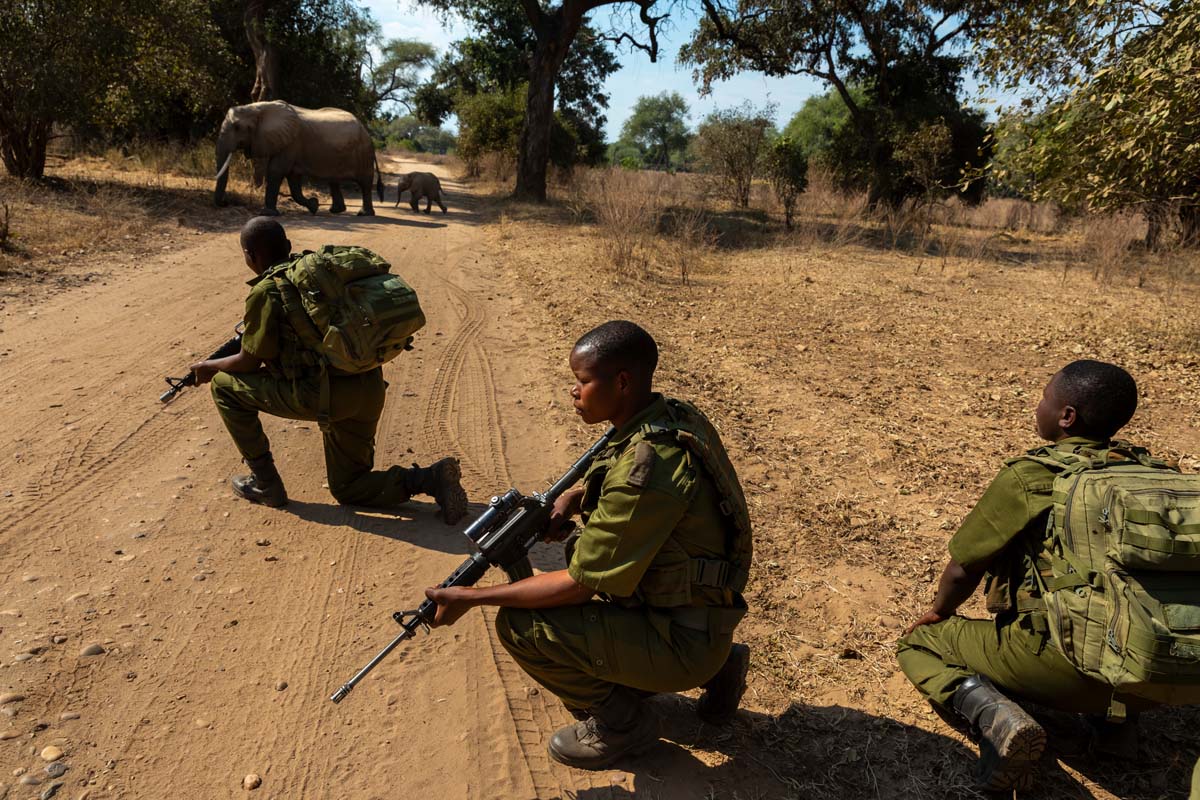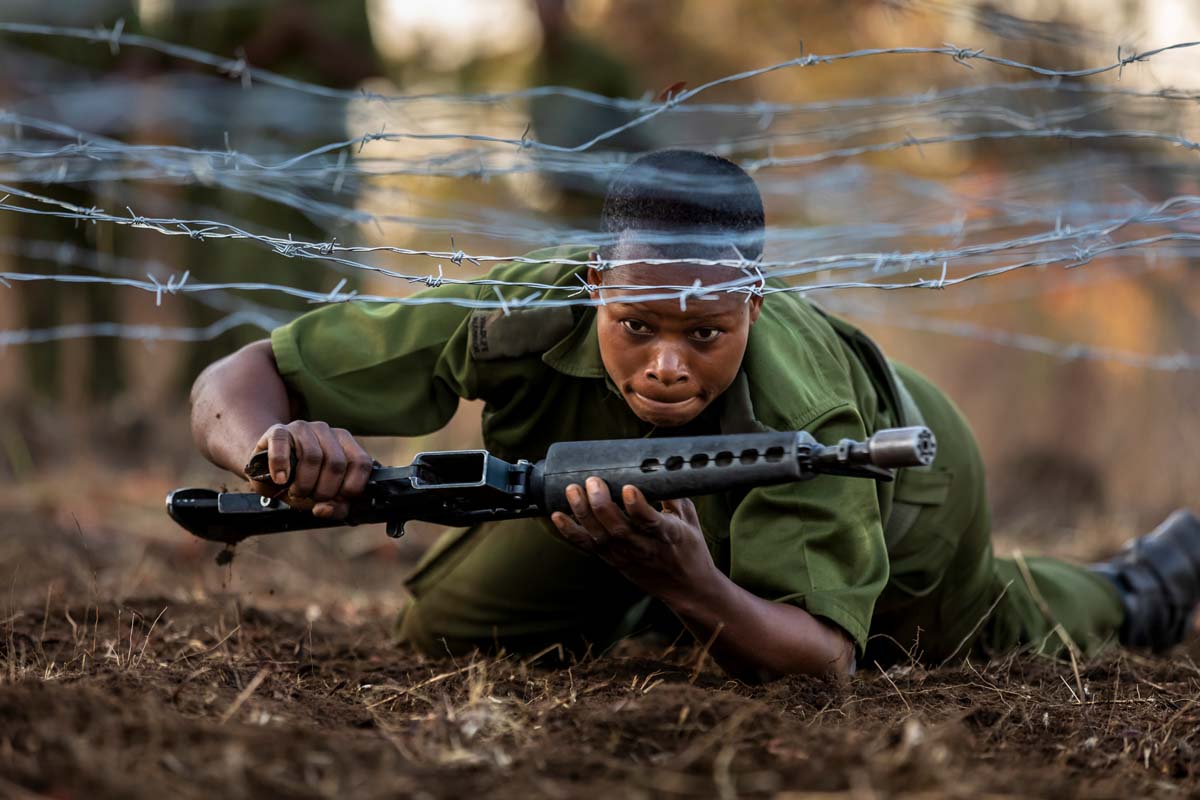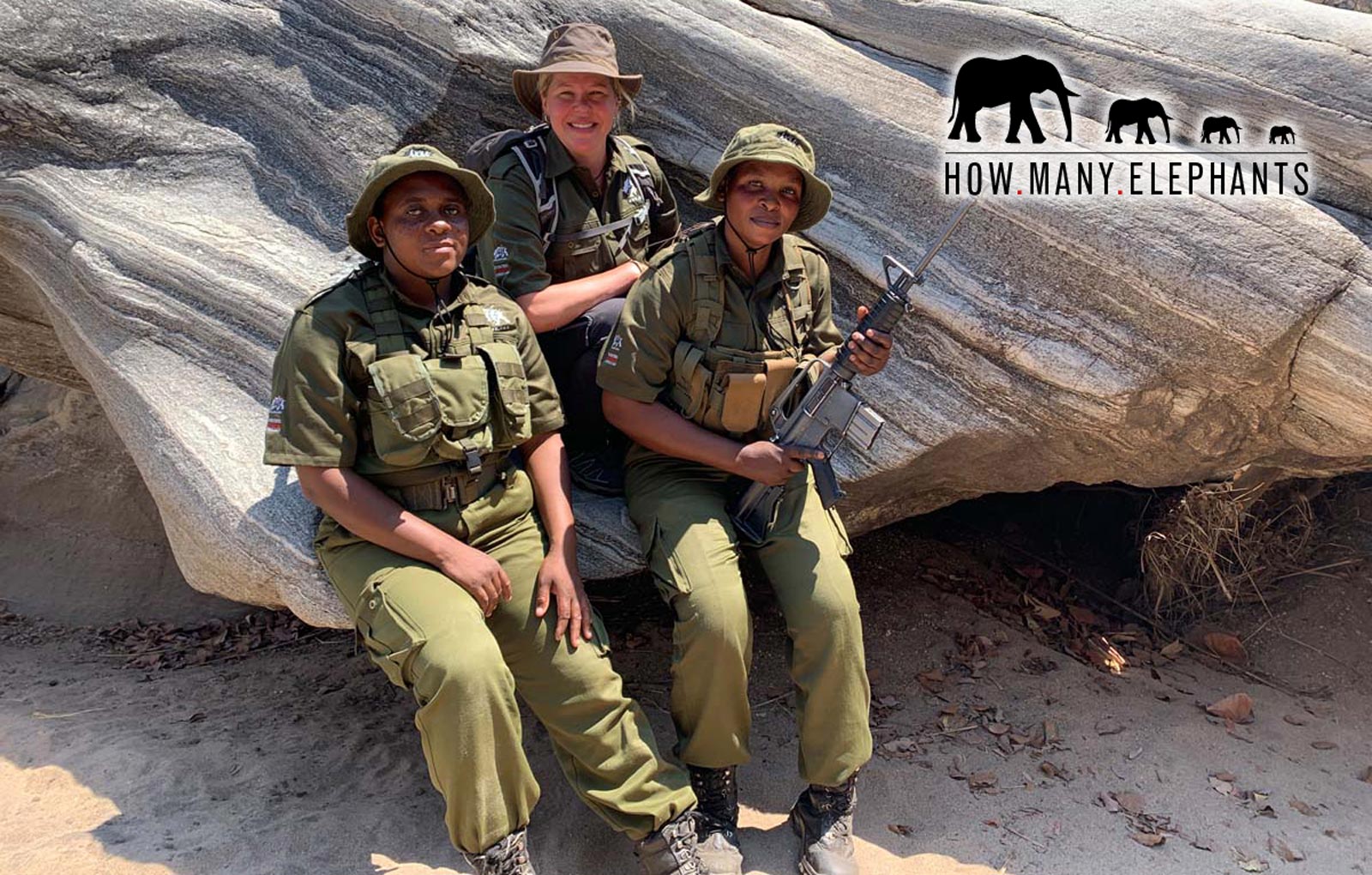 Hitting The Front Line Running
Hitting The Front Line Running
Everest summiteer and conservationist, Holly Budge, on patrol with Akashinga, an armed, all-female, anti-poaching team in Zimbabwe.
 Described as “one of the UK’s most accomplished female adventurers”, Holly Budge, was quite literally on top of the world when she summited Mount Everest. Her adventurous pursuits, including becoming the first woman to skydive Everest, provide a platform to raise valuable funds for How Many Elephants. To date, she has raised over £300k for charities and initiatives. Holly is an energetic and engaging keynote and TEDx speaker who talks passionately about her diverse achievements in the outdoors and the power of passion. Her message is simple: Think Big. Dream Bigger.
Described as “one of the UK’s most accomplished female adventurers”, Holly Budge, was quite literally on top of the world when she summited Mount Everest. Her adventurous pursuits, including becoming the first woman to skydive Everest, provide a platform to raise valuable funds for How Many Elephants. To date, she has raised over £300k for charities and initiatives. Holly is an energetic and engaging keynote and TEDx speaker who talks passionately about her diverse achievements in the outdoors and the power of passion. Her message is simple: Think Big. Dream Bigger.
Holly Budge, founder of How Many Elephants, earnt a rare privilege of accompanying the highly skilled Akashinga rangers whilst they patrol the front lines. From the summit of Everest to the front line of conservation in the African bush, Budge is no stranger to adventure but this was a whole different beast.
“It’s 5.45am. I’m standing in line with four armed Akashinga rangers, ready to go out on foot patrol. “You may not see any wildlife Holly, this is not a safari trip” says Nyaradzo. I pinch myself as the realisation of what I am about to do gets real. These women are fighting a war on poaching and the poachers are not the only threat out there. The rangers load their rifles. The front ranger clicks her fingers as a signal to go. I take a deep breath as we move into the darkness” says Budge.
Akashinga translates to “The Brave Ones” in the local vernacular, an apt name for the often dangerous work they do. Coming face to face with poachers and wild beasts, heading up raids and sting operations, these women are highly trained and highly motivated to make a difference to the future survival of endangered African wildlife species.
Budge is the founder of How Many Elephants. The charity’s mission is to raise awareness of the African elephant crisis and make a difference. Because every day, 96 elephants are killed for their ivory. That’s 35,000+ of these magnificent, gentle, intelligent animals a year. That’s ten years to extinction.
Budge spent several days immersed with the Akashinga Rangers, accompanying them on their daily patrols and other duties. Make no mistake though, this is not a 9-5 job and no day is the same. These women work fourteen days on and ten days off. They are not only changing the face of conservation but changing the traditional status quo of women staying at home bringing up the children. They are the breadwinners and positive role models in their families, their communities and beyond.
“As we move further into the interior, the realization that these women are my lifeline dawned on me. Without them, I’m a dead woman! This is a war zone and we are patrolling on the front lines. Challenges present themselves at every corner; Wild and dangerous beasts roaming, snare wire coiled round trees like spider’s webs’ awaiting their prey, the thorny undergrowth, the stifling heat of the sun, the desperate lack of water and signs of poachers’ presence make this a very hostile environment to be in, especially for a newcomer. “Welcome to the bush Holly” whispers one of the rangers. I gulp” says Budge.
Founder of Akashinga, Damien Mander says “by moving men into construction and labour and putting women into the power roles of law enforcement, management, decision making, we’ve completely deescalated the majority of local tension and brought conservation and communities together”. He strongly believes the face of conservation going forwards is female.
Budge recalls driving through the local communities with Nyaradzo, her go-to ranger,
and heads were turning. She told Budge that the men in her community had instilled in her that women couldn’t drive big vehicles. Nyaradzo proved them wrong when she learnt to drive a year before through the ranger programme. Her pride was spilling over as she drove the 4×4 anti-poaching vehicle around the communities as part of her daily work.
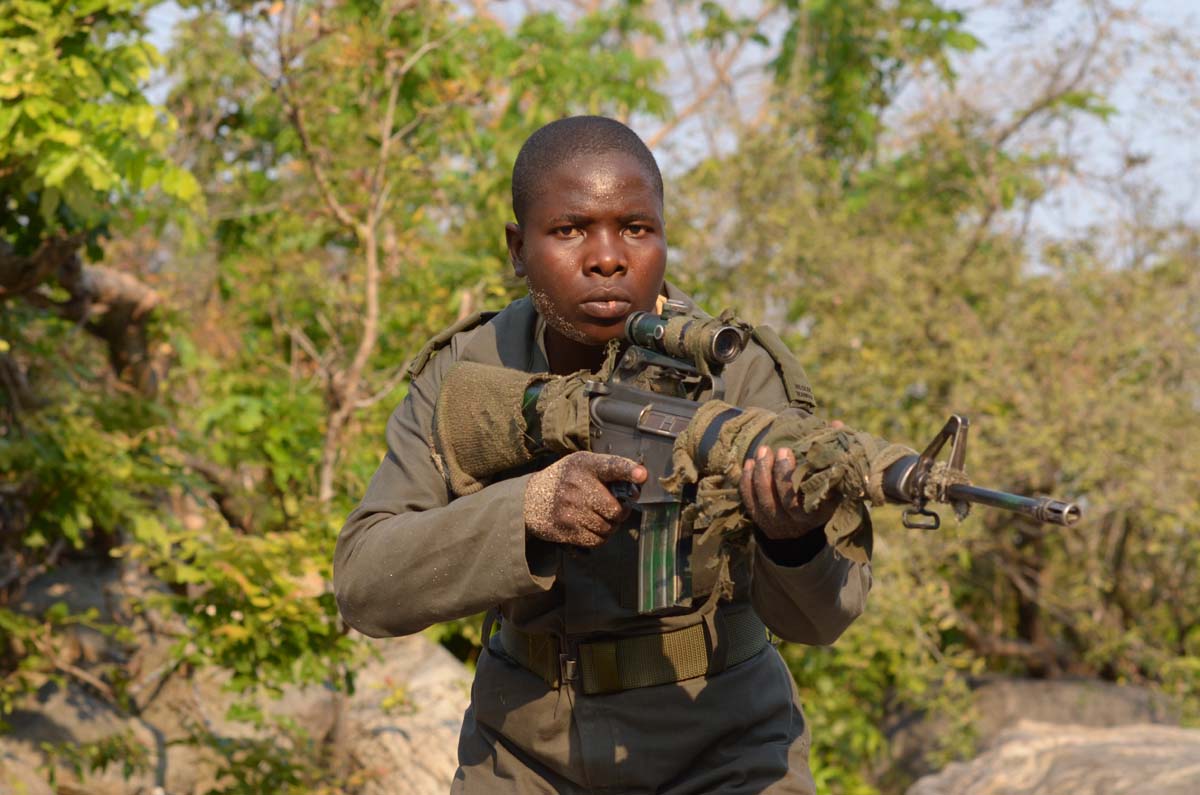 This is not Budge’s first time on the front line having spent time last year immersed with The Black Mambas in South Africa, another all-female anti-poaching team. “These are two very different female ranger models. The Black Mambas are armed with only pepper spray and handcuffs. The Akashinga are armed with rifles and trained in combat. Both are making a tremendous impact “on the ground” in Africa” says Budge.
This is not Budge’s first time on the front line having spent time last year immersed with The Black Mambas in South Africa, another all-female anti-poaching team. “These are two very different female ranger models. The Black Mambas are armed with only pepper spray and handcuffs. The Akashinga are armed with rifles and trained in combat. Both are making a tremendous impact “on the ground” in Africa” says Budge.
Budge uses her world record adventures, including being the first woman to skydive Everest to raise awareness of the African elephant crisis and raise charitable funds for How Many Elephants. To date, she has fundraised over £300K. Her hard-hitting campaign uses design as a powerful visualisation tool to bridge the gap between scientific data and human connection. Her travelling exhibition showcases 35,000 elephant silhouettes to show the sheer scale of the elephant poaching crisis and is heading for China next year.
“Part of the originality of my exhibition is in my approach to avoid gruesome and shocking imagery to portray the facts. To actually see and connect with this data visually is very impactful” says Budge.
The thought of the African savannah devoid of elephants is heart-breaking enough but putting emotion aside, the impacts of losing these animals will be of extreme detriment to the environment and beyond; If the elephants go extinct, entire ecosystems could follow as they are a keystone species and important ecosystem engineers.
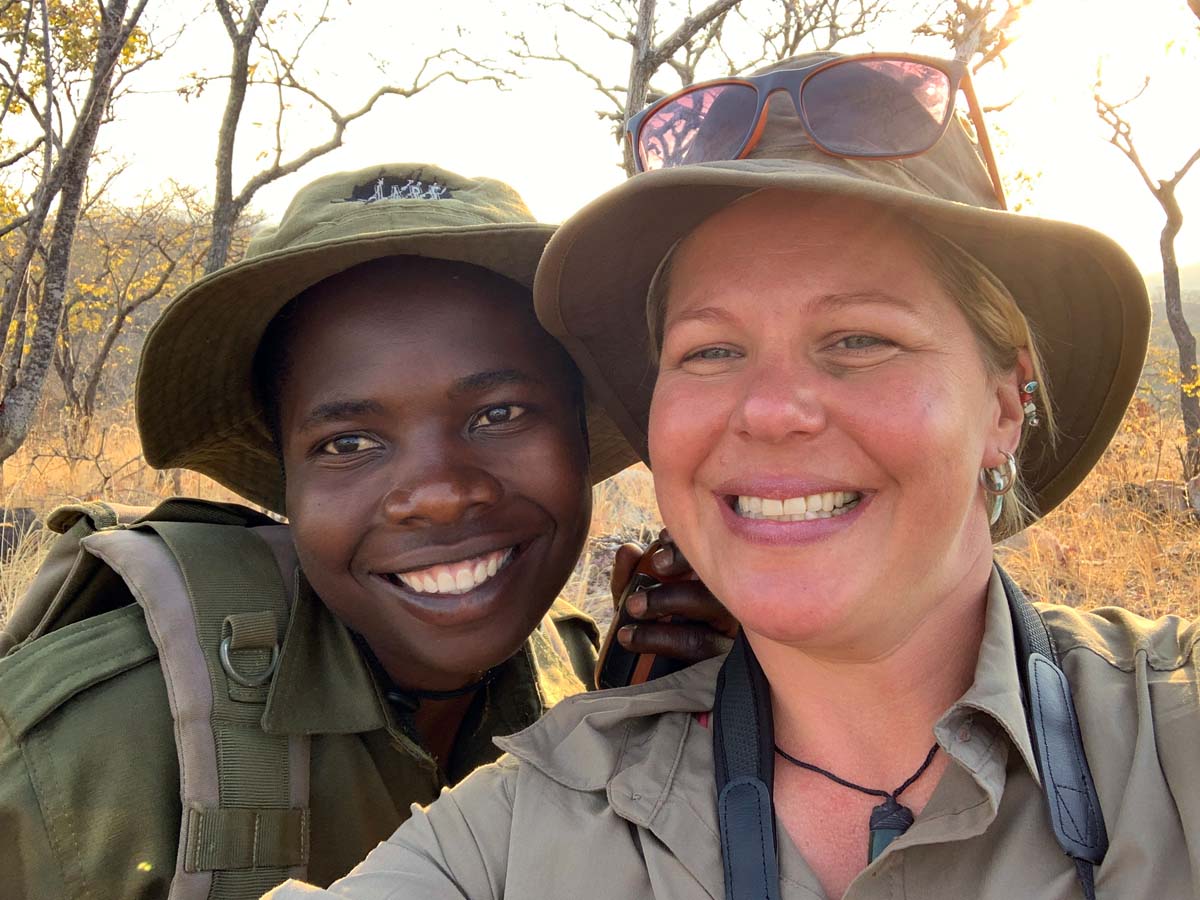 Budge helped to dismantle snares wrapped around shady trees, just waiting for their victims to take shade from the beating sun. “It was heartbreaking to try and comprehend how many snares are out there and how quickly they are replaced, once found and removed. It is an ongoing battle” says Budge.
Budge helped to dismantle snares wrapped around shady trees, just waiting for their victims to take shade from the beating sun. “It was heartbreaking to try and comprehend how many snares are out there and how quickly they are replaced, once found and removed. It is an ongoing battle” says Budge.
Budge is calling all conservationists, scientists, politicians, educators, storytellers, adventurers and change makers who dare to say, “I can make a difference in the world”, it’s time to stand up for elephants, before it is too late.
‘To see 35,000 elephant graphics on a wall is both shocking, impactful and a great way of raising awareness of the sheer scale of the poaching problem in Africa. Holly is a passionate individual and is using her creative and adventurous endeavours to make a really positive contribution’ says Colin Bell, a conservationist and author
Read more about How Many Elephants and ways to get involved here.
